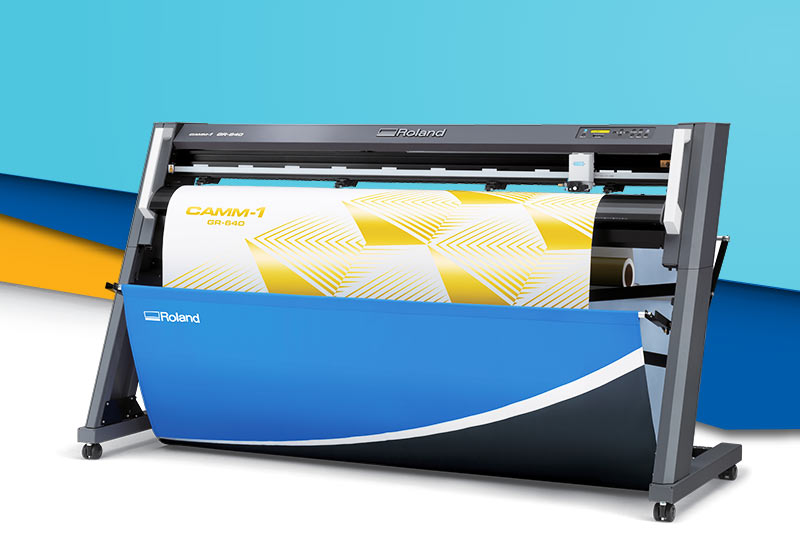NOTE: This article has been modified from the original version.
In show business, a triple threat is someone who can sing, dance, and act. At Roland DG, we’ve mastered the three disciplines of printing, cutting, and printing and cutting together. Like many Hollywood triple threats, we have found that one aspect of our talents has often overshadowed the others. In our case, we have become very well known for integrated print/cut devices. We offer a wide variety of sizes and configurations, and have been the leaders in the segment since we introduced the first integrated machines over 18 years ago.
However, we also make really good printers that don’t cut, and professional grade cutters that don’t print. There has been a lot of discussion around the industry about which hardware represents the “better workflow, and like most difficult questions, the answer is a resounding and unequivocal” it depends. I’m a car guy, so I tend to equate things to those terms. It is absolutely impossible to determine whether a Ferrari or a Ford pickup is the better vehicle without understanding how it will be used. One will win races, the other will haul lumber, and neither is a good choice if it doesn’t have capabilities that match the task.
The integrated printer/cutter vs. separate machine dilemma comes down to the same sorts of issues. Most of the arguments I have seen revolve around the theoretical time saved, and efficiency gained, by separating the functions. These arguments are completely correct. When operating at capacity, and running both machines constantly, the two machine setup will get more work out per day, but just whipping out a stop watch means you’ll miss some key points.
In order to get maximum efficiency from separate machines, operators have be available to process large jobs in sections, interrupting their other tasks on a fairly frequent basis to move material from the printer to the cutter, register the prints, and process the file through the cutting software. It is only by breaking long runs of decals up into sections that users can ensure both machines will run simultaneously, and if an operator isn’t available, a lot of the theoretically saved time will be lost as prints sit waiting for someone to have time to do something with them. On the other hand, an integrated printer/cutter means the owner can send the job once, to one machine, from one software, and go off and do something else. That something else might be bidding on a few more jobs, installation, design, or having dinner with your family. An integrated machine will also save precious floor space in a smaller shop.

This is a 64″ Roland DG cutter. If two machines fit your working style, it integrates seamlessly with a TrueVIS VF2-640 or other Roland DGA large format printer.
For very busy shops that will run their printers 8 or 10 hours a day and have dedicated operators, separate machines may be the right choice. If someone is always in the print room ready to perform the required labor, Roland DG has great solutions for that environment. On the other hand, we have a lot of owners who wear more than one hat in their business, and find that the small amount of time they might gain will be offset by the lost opportunities of having to stop another task and move vinyl around.
The bottom line is that we don’t try to tell you what’s “better” for your business. It’s your business, so you should make that call. We do try to provide enough choices and enough information to help make the decision easy, and to fit whatever your working style might be.
- Find out more about Roland DGA's print and cut workflow options that can shape your business and build even greater success for your sign and graphics shop, graphics business or graphics customization projects.

